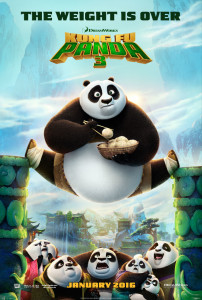Expectant mum and wildlife warrior Carly Wilson lives on the Gold Coast and has spent much of her working life caring for animals. So while researching gender reveal parties online and discovering just how prevalent the use of helium balloons in not only gender reveal celebrations is, but in all aspects of celebratory life is, she sets out to get to the bottom of why balloon releases are not considered littering when they are so harmful to the environment.
The first important discovery is that the research – the Burchette or “Oak Leaf” study – that the balloon industry bases their claims that “all latex balloons are biodegradable” on, is troubling at best. The study is not peer reviewed, was never published in a scientific journal, is completely out of date and does not include any research regarding balloons’ biodegradability in salt water. Yet time and time again, despite the evidence literally washing up on our shores and in the stomachs of sea turtles and other marine wildlife, this research is brought out as a fail safe catch all for the balloon industry.
There is an obvious agenda going on in Rubber Jellyfish, as with most documentary films, but at the heart of this handmade journey into the environmental impacts of balloon releases is a crusade to simply educate the public, industry stakeholders and those who have the power to make widespread, lasting impact through policy and change. The overwhelming impression of what Carly discovers is that people, companies, governments, and the balloon industry itself do not realise that balloons do not biodegrade in salt water the same way they do on land, in creek water, or in the ground. They do not know that balloon waste is such a prevalent feature in turtles that are dying from a gut impaction. It seems from what has been collected by both environmental groups along beaches and by veterinarians out of the digestive systems of marine wildlife, in particular sea turtles, that helium balloons do not even break up the way the balloon industry has been saying since the release of the Oak Leaf study. Rather than shattering into small pieces and scattering over large areas as the study suggests, balloons seem to shatter in a way that makes them look, floating in water, almost indistinguishable from jellyfish.
It is heartening to see so many people in varying walks of life trying to do something about helium balloon waste in our environment whether it be as simple as organising a beach clean up day, or lobbying the biggest balloon release culprits to change their ways. It is disheartening however that the biggest impacts in this fight are being made by individuals and not by our government, or indeed the balloon industry itself.
Rubber Jellyfish presents an important environmental issue we all need to learn more about. Who among us has not partaken in a balloon release or accidentally let one go as a child? In Primary School my class tied notes to helium balloons and released them in the hopes we would get pen pals. My balloon was answered by someone in Queensland, a girl in another class had hers answered by someone in New Zealand.
In Queensland the release of balloons into the environment is considered littering. This move was not a very popular one at the time and if you want to know why the decision was made, go and see Rubber Jellyfish.
There are limited screenings of Rubber Jellyfish via Demand.Film in various locations including Cinema Nova on 6th December. For screenings see here. Alternatively, you can host your own screening.






Rubber Jellyfish The Movie is completely misleading. Jellyfish are not a major portion of all turtle’s diets. Brittle fracture balloons do not look like jellyfish to turtles. And to claim that a piece of vulcanised rubber weighing less than 3 grams can interchangeably look like a jellyfish, squid or octopus is absurd. A study examining how turtles see concluded they mistake soft, translucent plastic for jellyfish. Rubber Jellyfish contains numerous inaccuracies – grossly overstating the number of balloons found in the international coastal conservancy cleanup in 2017. 93,000 when it was actually 65,911. This is only one of the instances in the film that no context is provided. The proportion of balloons found in the worldwide cleanup in 2017 was 0.3%.
In 2018 it was 0.08%. Many similar tiny numbers and proportions apply to balloons in studies. Latex balloons are biodegradable. The biodegradability of the material has been reported in scientific journals for more than a century. Several sources referred to in the film even acknowledge the biodegradability of balloons. The inhalation deaths that are blamed on balloons were not accidental deaths, but drawn from records of deliberate suicides, which likely did not include the use of balloons. The deception was and is present in the promotion, production and ongoing marketing of the film, misrepresenting data and scientific papers. Too many examples to list here.
Rubber Jellyfish should be used as an example for students to study to learn to critically assess and not believe any information that they are presented with. It is full of irrelevant images. It does not answer questions it poses. It ignores the much greater issues facing turtles and the environment. Rubber Jellyfish is a con.
Rubber Jellyfish is misleading, the self-absorbed rantings of an individual who cares nothing for providing information with relevance, transparency or honesty. Too many examples to list here. Studies misquoted, cherry-picked and deliberately misrepresented. Inaccurate numbers provided. No context or overall data to answer the very questions posed in the movie. Glaring omissions made from studies quoted. To suggest a piece of rubber weighing less than 3 grams can look like a jellyfish, squid and octopus all at the same time is absurd. Scientists have known for a long time that natural rubber is biodegradable with the earliest information published over 100 years ago. So much for the information “hidden in academia” that was promised the film would reveal. Instead there is a paper (only available on Rubber Jellyfish website) that ignores reasonable conditions for degradation, talks about the difference in the rate of changes in mass, not the actual differences in the mass of the latex and references a paper from the 1800s. So many other inaccuracies, conjecture, non-disclosure and irrelevant claims, including relating to legislation, numbers of balloons found, and quoting from studies. The number provided relating to helium deaths are deliberate suicides and likely did not involve the use of balloons. Many photos do not show helium-filled balloons. Rubber Jellyfish The Movie should be used for students to study how to identify misinformation and to not believe information that is presented to them. Rubber Jellyfish The Movie is a con.
Two guesses what industry “Adele” works in. The film does not cherry-pick or misquote studies. The filmmakers interviews scientists and presents what they say accurately. The filmmaker also goes out of her way to let balloon industry advocates have a say. Rubber Jellyfish absolutely should be (and is being) used for students “to study how to identify misinformation and to not believe information that is presented to them” – people need to critically evaluate propaganda and misleading marketing from industry lobbyists. Only one side in this “debate” has a vested interested.